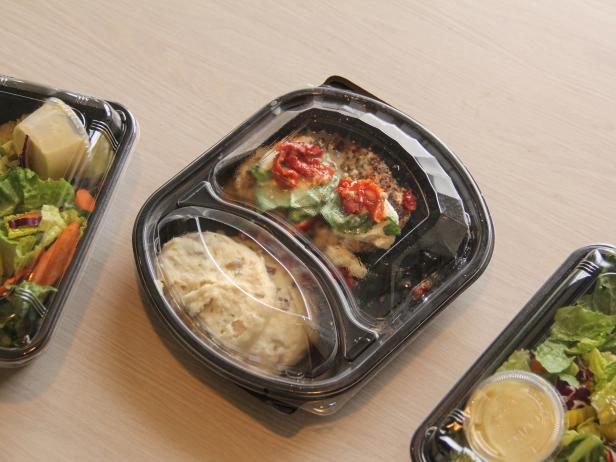Why You Might Want To Throw Away Your Black Kitchen Utensils and Takeout Containers
Breaking article from Food Network.
If you tend to rinse, reuse and recycle the black plastic containers that your takeout orders arrive in, it’s time to get out of that habit. While it might seem more sustainable to reuse (and eventually recycle) these containers, new research shows that many types of black plastics contain harmful flame retardants that shouldn’t be coming into contact with food. (That means the black plastic spatula you use to scramble your eggs should get tossed, too.)
Here’s what you should know about black plastic items in your kitchen (and elsewhere) and why you should throw them in the trash, not the recycle bin.
Image by Marie LaFauci/Getty Images
Research shows that black plastic contains toxic flame retardants, probably due to contamination during recycling.
A study published this month in Chemosphere looked at samples of different black plastic objects, from kids toys to sushi trays to black plastic food containers and utensils. They screened these black plastic items for bromine, an element used to make brominated flame retardants (BFRs) that are purposely added to products like electronics and furniture to make them less flammable. Of the samples that contained bromine, 85 percent contained BFRs, which aren’t considered safe for consumption at any level. The item with the highest level of BFRs (black costume pirate beads meant for kids) had a huge amount of BFRs, almost 3 percent by weight.
One type of BFR in particular, called decabromodiphenyl ether of decaBDE, was banned in the U.S. in 2021 (although manufacturers had until 2023 to remove it from their products) because research showed it was linked to the development of cancer, brain development and other health issues. Yet, decaBDE was found in nearly three-quarters of the black plastic items tested.
How did toxic chemicals find their way into kitchen products?
To be clear, manufacturers aren’t adding flame retardants to black plastic kitchen items on purpose. Instead, the new study explains that these toxic compounds are making their way into the black plastic supply through the recycling of black plastic electronics. BFRs and other flame retardants are added to these appliances to reduce the risk of them catching on fire, and when the electronics get recycled alongside other types of black plastic, they contaminate the whole lot. “The detection of FRs in collected household products indicates that recycling, without the necessary transparency and restrictions to ensure safety, is resulting in unexpected exposure to toxic flame retardants in household items,” the study reads.
Many recycling facilities don’t actually recycle black plastic because the carbon used to make the plastic black prevents it from being detected and identified as plastic by the sorting machines in these facilities. So, black plastic from recycled electronics sometimes gets used by manufacturers who can’t find recycled black plastic elsewhere.
As it turns out, the recycling of black plastic has been an issue for a while. An older 2018 study looked at black plastic items like toys, utensils and jewelry and found that 40 percent of the items contained harmful chemicals like lead, mercury, and flame retardants.

No comments:
Post a Comment